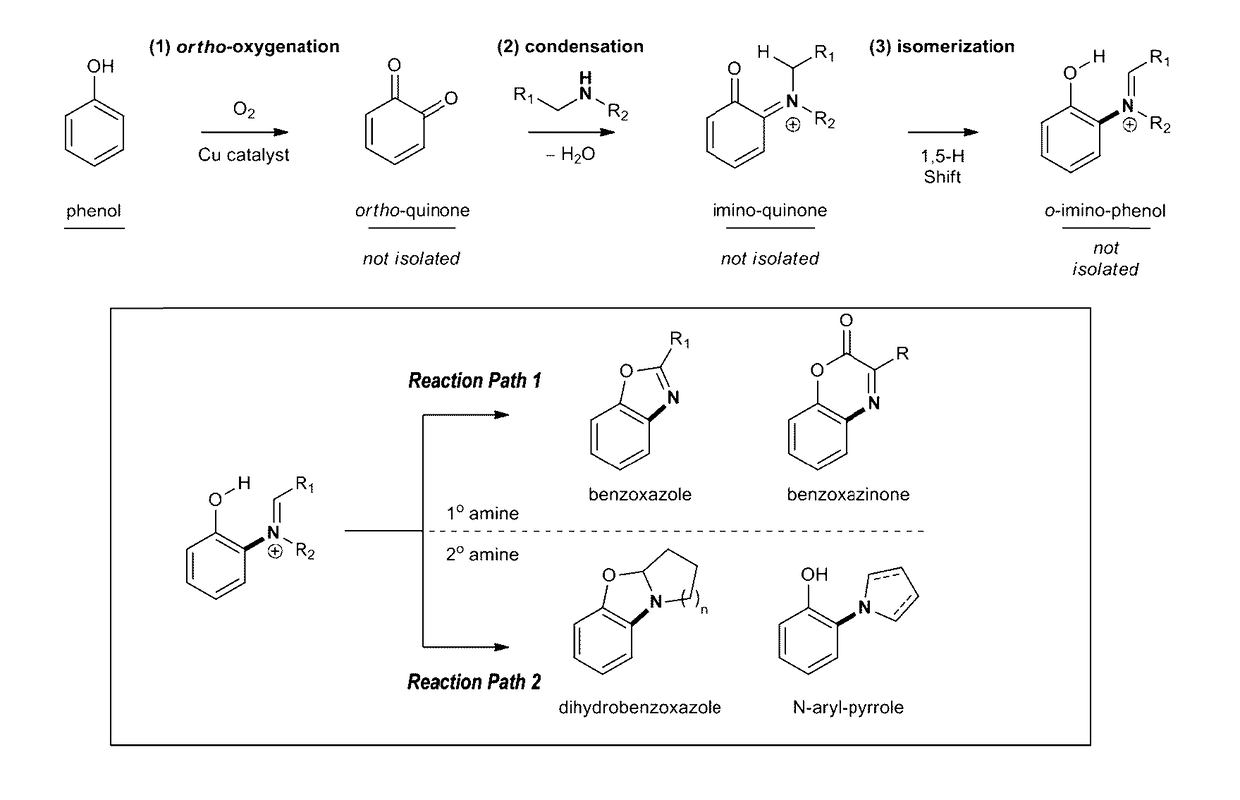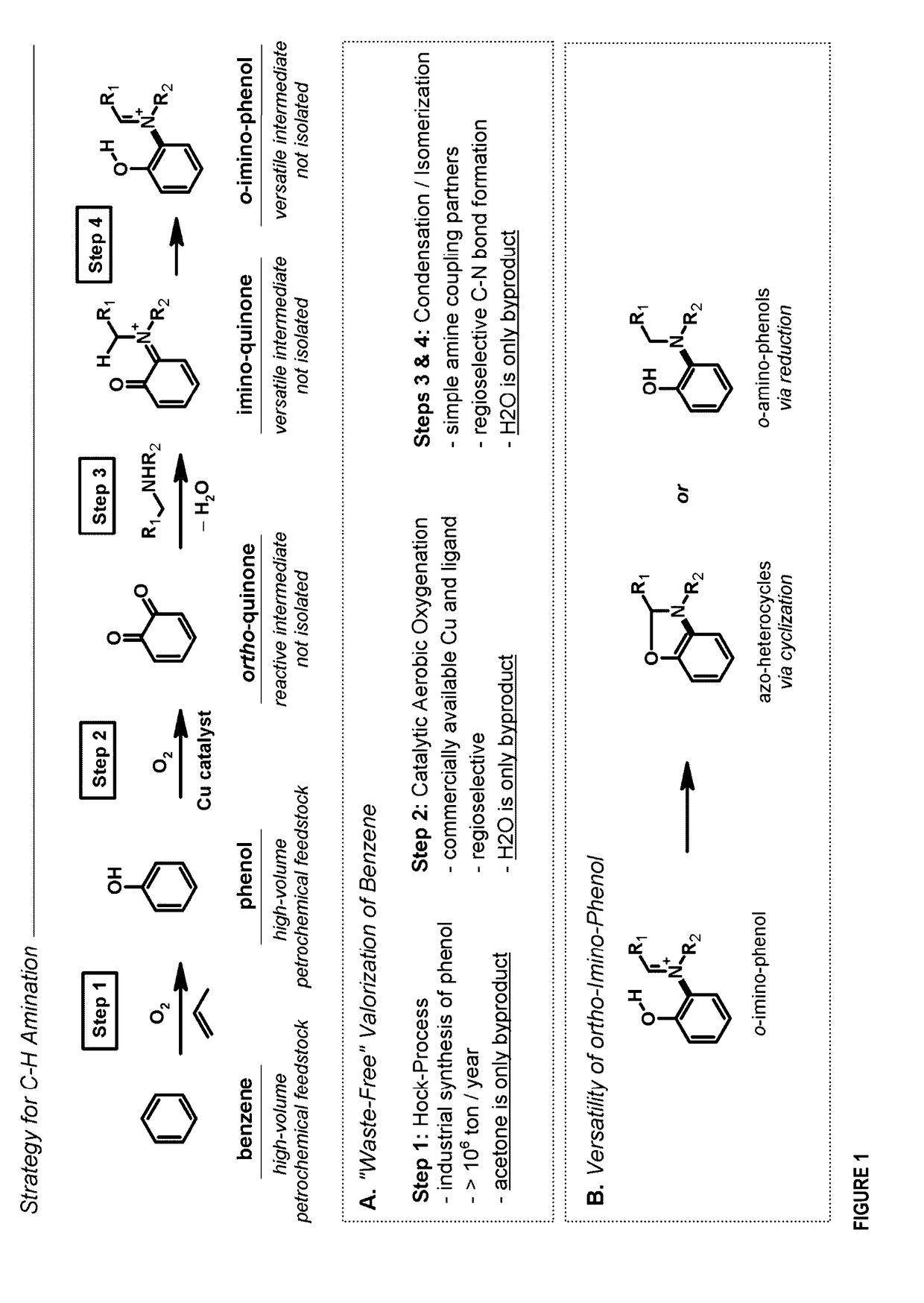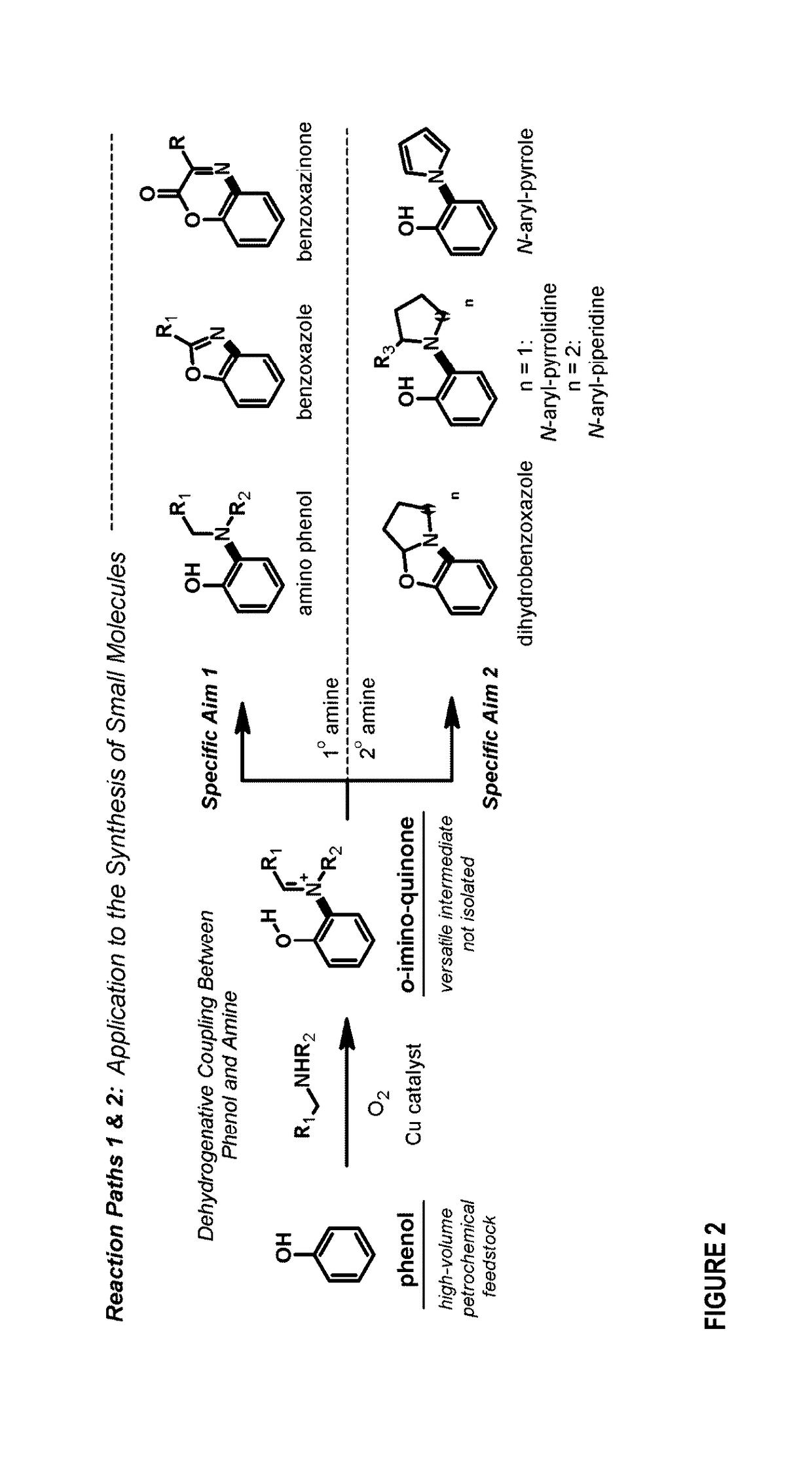Method for producing an arene with an aromatic c-n bond ortho to an aromatic c-o bond
a technology of c-o bond and arene, which is applied in the direction of oxidation of carbonyl compounds, organic chemistry, chemistry apparatus and processes, etc., can solve the problems of poor atom economy, poor chemoselectivity, and regioselectivity, and achieves limited scope and good oxidation efficiency
- Summary
- Abstract
- Description
- Claims
- Application Information
AI Technical Summary
Benefits of technology
Problems solved by technology
Method used
Image
Examples
example 1
Synthesis of Nitrogen Rich Heterocycles and Amino Phenols
[0276]We describe below the dehydrogenative coupling of phenols and amines to create nitrogen rich heterocycles and amino phenols (FIG. 4). Mechanistically, the process is composed of (1) ortho-oxygenation, (2) condensation with an amine to generate an ortho-imino-quinone, and (3) 1,5-hydrogen atom shift to obtain an ortho-imino-phenol. This is followed by various reactions to produce an array of compounds.
Reaction Path 1—Coupling of Phenols and 1° Amines
[0277]We first provide a dehydrogenative coupling between 1° amines and phenols that provides ortho-aminated benz-azo heterocycles or 1,2-amino phenols.
[0278]We developed conditions for the dehydrogenative coupling of 3,5-di-tert-butylphenol (1) and 1° amines to provide benzoxazoles (FIG. 5, entries 1-18). This is a 1-pot, catalytic aerobic process that uses readily accessible phenols, and previous methods with a catalytic aerobic alternative. The reaction was conducted by oxy...
example 2
Supporting Information Regarding Example 2
Experimental Section
General Experimental
[0347]Chemicals and solvents were purchased from Sigma Aldrich, Alfa Aesar, Strem Chemicals or TCl. Solvents were dried and purified using a PureSolv MD 7 (from Innovative Technology) or MB SPS 800 (from MBraun). All phenol and amine substrates were purified prior to use: liquids were distilled using a Hickman apparatus immediately prior to use and solids were recrystallized. N,N′-di-tert-butylethylenedimaine (DBED) were distilled over CaH2 under N2. [Cu(MeCN)4](PF6) was purchased from Sigma Aldrich or Strem. Unless otherwise noted, reactions were performed in flame-dried glassware under a positive pressure of N2 using standard synthetic organic, inert atmosphere techniques. All oxidation reactions were set-up in flame-dried, 25-mL Radley tubes with a Teflon-coated stir bar under a nitrogen atmosphere (Praxair, N2 pre-purified). The reaction vessels were then connected to a cylinder of O2 (Praxair), pu...
example 3
Supporting Information regarding Example 3
General Experimental
[0540]Chemicals and solvents were purchased from Sigma Aldrich, Alfa Aesar, Strem Chemicals or TCI. Solvents were dried and purified using a PureSolv MD 7 (from Innovative Technology) or MB SPS 800 (from MBraun). All phenol and amine substrates were purified prior to use: liquids were distilled using a Hickman apparatus immediately prior to use and solids were recrystallized. N,N′-di-tert-butylethylenedimaine (DBED) were distilled over CaH2 under N2. [Cu(MeCN)4](PF6) was purchased from Sigma Aldrich or Strem. Unless otherwise noted, reactions were performed in flame-dried glassware under a positive pressure of N2 using standard synthetic organic, inert atmosphere techniques. All oxidation reactions were set-up in flame-dried, 25-mL Radley tubes with a Teflon-coated stir bar under a nitrogen atmosphere (Praxair, N2 pre-purified). The reaction vessels were then connected to a cylinder of O2 (Praxair), purged three times wit...
PUM
 Login to View More
Login to View More Abstract
Description
Claims
Application Information
 Login to View More
Login to View More - R&D
- Intellectual Property
- Life Sciences
- Materials
- Tech Scout
- Unparalleled Data Quality
- Higher Quality Content
- 60% Fewer Hallucinations
Browse by: Latest US Patents, China's latest patents, Technical Efficacy Thesaurus, Application Domain, Technology Topic, Popular Technical Reports.
© 2025 PatSnap. All rights reserved.Legal|Privacy policy|Modern Slavery Act Transparency Statement|Sitemap|About US| Contact US: help@patsnap.com



